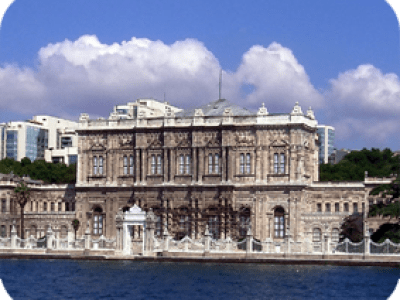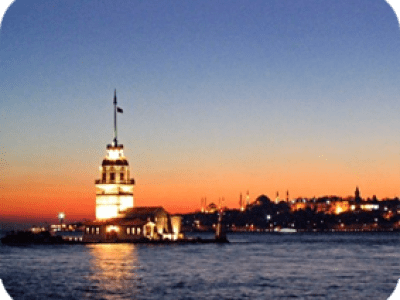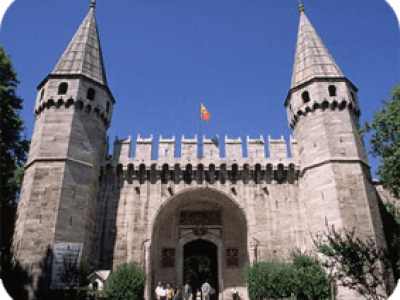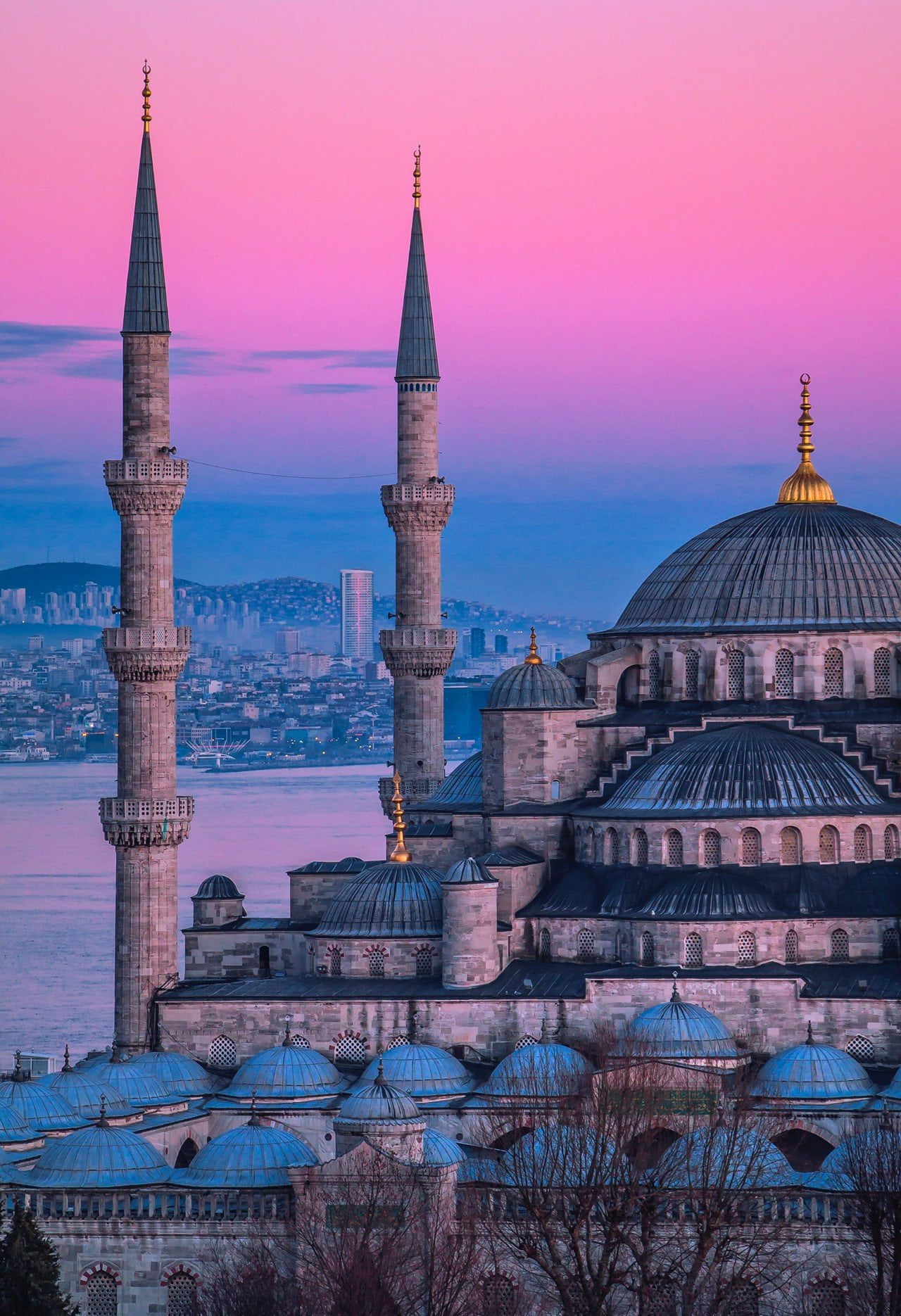ISTANBUL
Istanbul embraces two continents, one arm reaching out to Asia, the other to Europe. Through the city’s heart, the Bosphorus strait, course the waters of the Black Sea, the Sea of Marmara and the Golden Horn. The former capital of three successive empires – Roman, Byzantine and Ottoman – today Istanbul honors and preserves the legacy of its past while looking forward to its modern future. Indeed it is Istanbul’s variety that fascinates its visitors. The museums, churches, palaces, great mosques, bazaars and sights of natural beauty seem inexhaustible. As you recline on the shores of the Bosphorus at sunset contemplating the red evening light reflected in the windows on the opposite shore you understand, suddenly and profoundly, why so many centuries ago settlers chose to build on this remarkable site. At times such as these, you feel that Istanbul is truly one of the most glorious cities in the world.
PALACES
On a spot of land at the confluence of the Bosphorus, the Golden Horn and the Marmara Sea stands the Topkapi Palace, the maze of buildings at the center of the Ottoman Empire between the 15th and 19th centuries. In these opulent surroundings the sultans and their court lived and governed. A magnificent wooded garden fills the outer or first court. On the right of the second court, shaded by cypress and plane trees, stand the palace kitchens, now galleries exhibiting the imperial collections of crystal, silver and Chinese porcelain. To the left, the Harem, the secluded quarters of the wives, concubines and children of the sultan, charms visitors with echoes of the intrigue of centuries. Today the third court holds the Hall of Audience, the Library of Ahmet III, an exhibition of imperial costumes worn by the sultans and their families, the famous jewels of the treasury and a priceless collection of miniatures from medieval manuscripts. In the center of this innermost sanctuary, the Pavilion of the Holy Mantle enshrines the relics of the Prophet Mohammed brought to Istanbul when the Ottomans assumed the caliphate of Islam. (Open every day except Tuesday.) Built in the mid-19th century by Sultan Abdulmecit I, the facade of Dolmabahçe Palace stretches for 600 meters along the European shore of the Bosphorus. The vast reception salon, with 56 columns, and a huge crystal chandelier weighing four and a half tons and lit by 750 lights, never fails to astonish visitors. At one time, birds from all over the world were kept in the Bird Pavilion for the delight of the palace’s privileged residents. Ataturk, founder of the Turkish Republic, died in Dolmabahce on the 10th of November, 1938. (Open every day except Monday and Thursday.) In the 19th century, Sultan Abdulaziz built the Beylerbeyi Palace, a fantasy in white marble amid magnolia-filled gardens, on the Bosphorus Asian shore. Used as the Sultan’s summer residence, it was offered to the most distinguished foreign dignitaries during their visits. Empress Eugenie of France was among its residents. (Open every day except Monday and Thursday.) In addition to the State Pavilions at the Yildiz Palace, the compound includes a series of pavilions and a mosque. It was completed by Abdulhamit II at the end of the 19th century The chale, the largest and most exquisite of the buildings, reveals the luxury in which the sultans lived and entertained. Set in a huge park of flowers, shrubs and trees, gathered from every part of the world, the palace grounds offer one of the most beautiful panoramic views of the Bosphorus. Because of restoration work, only the chale and park are open to the public. (Open every day except Monday and Thursday.)
PAVILIONS
The Göksu Palace, also known as Kucuksu, takes its name from the streams which empty into the Bosphorus near the tiny palace. Built by Abdulmecit I in the middle of the 19th century, it was used as a summer residence. (Open every day except Monday and Thursday) Originally built in the 18th century and later restored by various sultans, the Aynali Kavak Summer Pavilion assumed its name, Mirrored Poplar, when its famed mirrors, a gift from some of the Venetians, were installed in 1718. This palace on the Golden Horn is one of the most beautiful examples of traditional Turkish architecture. (Open every day except Monday and Thursday) The 19th-century lhlamur Pavilion is named after the linden trees that grow in its gardens. Now in the heart of metropolitan Istanbul, when it was originally constructed, the pavilion lay in the rolling countryside that surrounded the city. The Merasim Pavilion was used for official ceremonies while the Maiyet Pavilion sheltered the sultan’s entourage and on occasions, his harem during their excursions out of the palace confines. (Open every day except Monday and Thursday) The Maslak Pavilion on a shady green hill were conceived by Sultan Abdulaziz as hunting lodges and are superb examples of the late 19th-century Ottoman decorative style. These are particularly noteworthy. (Open every day except Monday and Thursday) The Florya Atatürk Sea Pavilion served as a summer residence for Turkish presidents. Built in a T-shaped design jutting out onto the Marmara Sea, this building constructed in 1935, serves as a showcase for some of the loveliest examples of early 20th century furnishings. Ataturk was the first president to stay here. (Open weekdays except Monday and Thursday.)





0 Comment